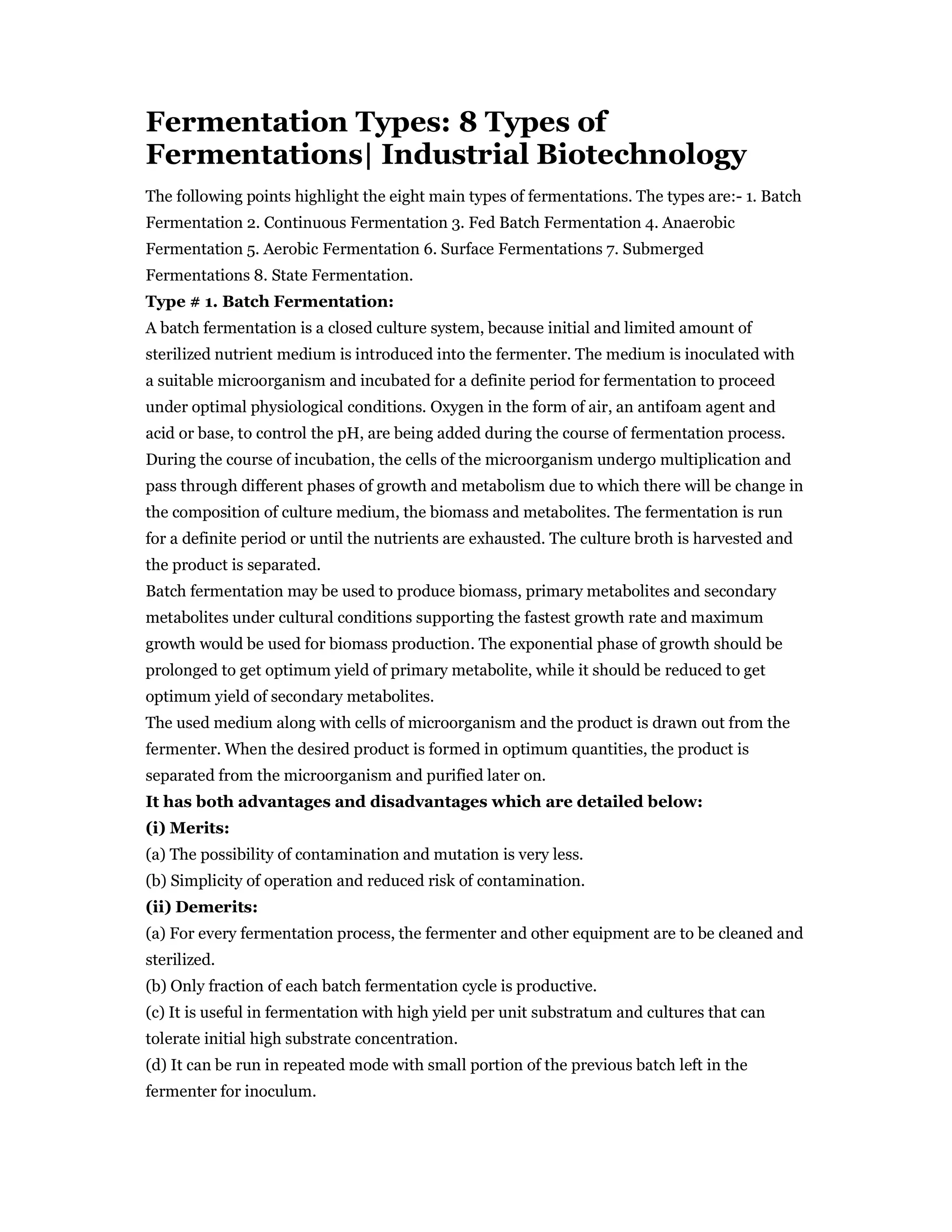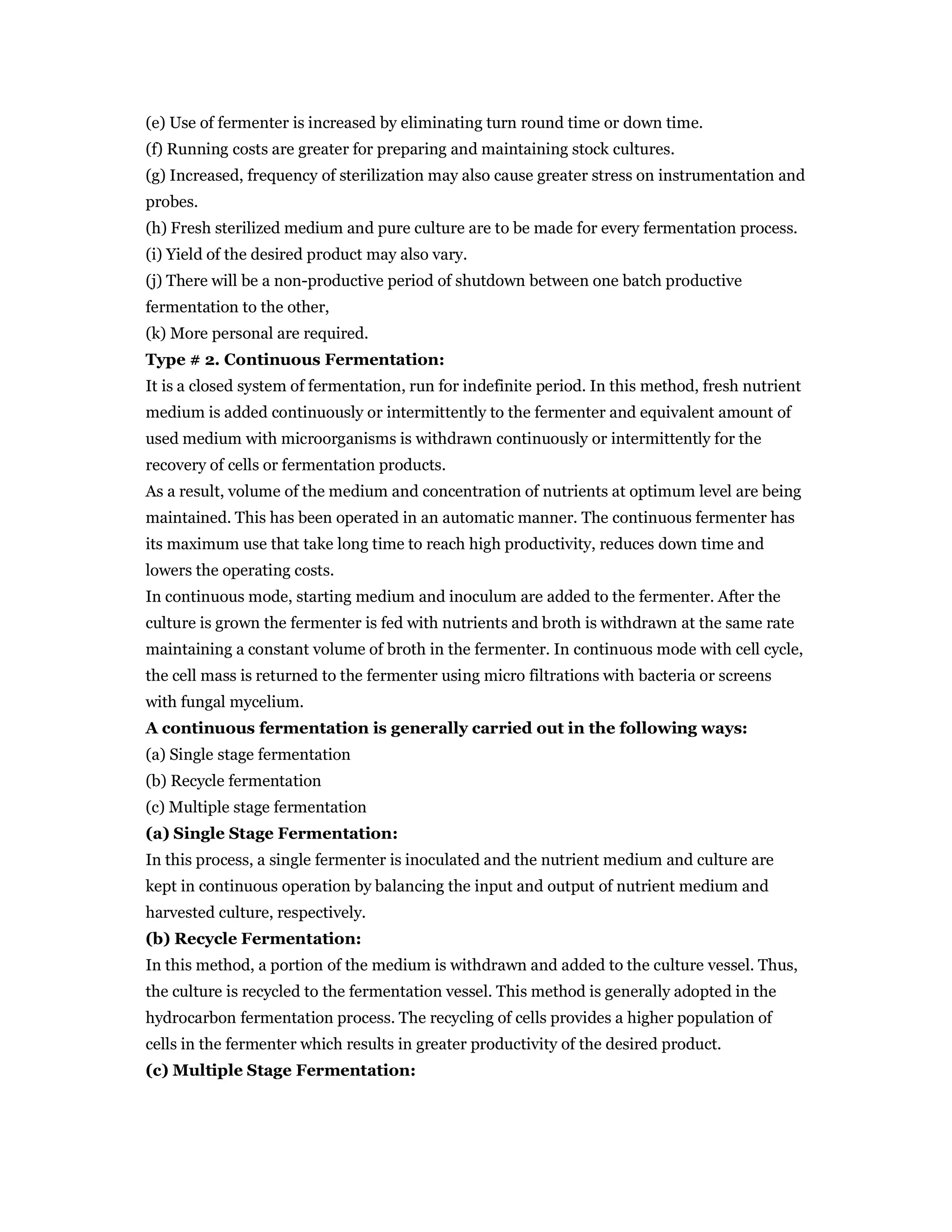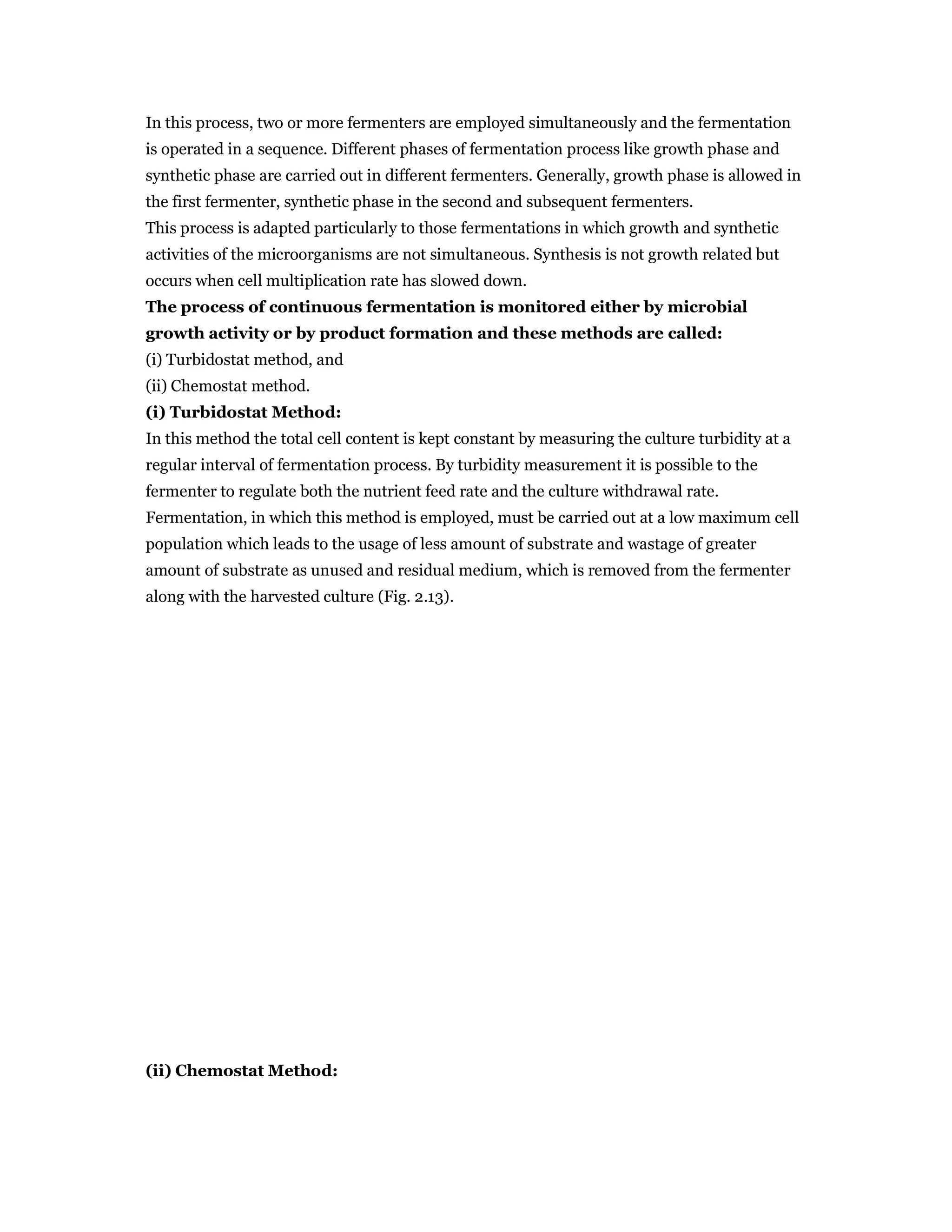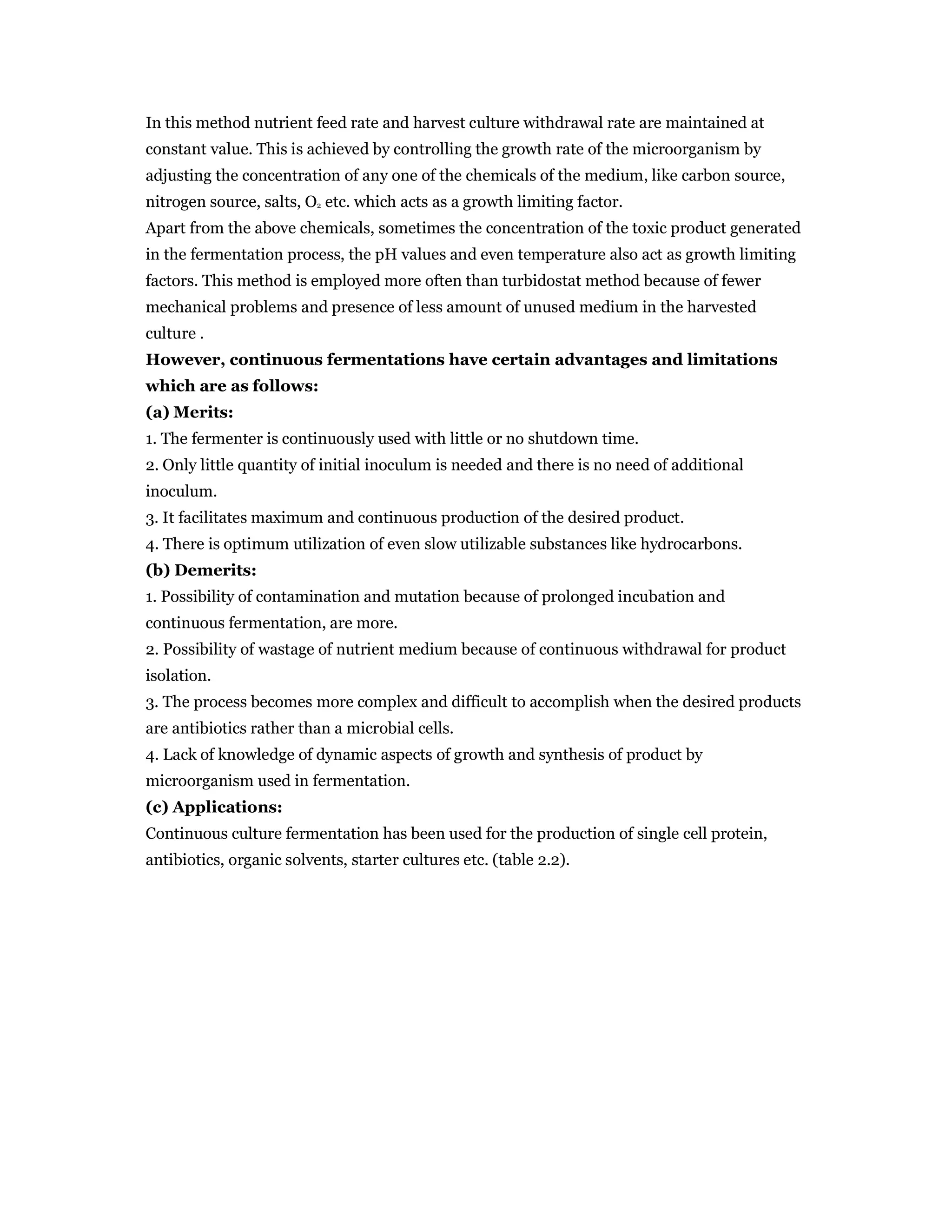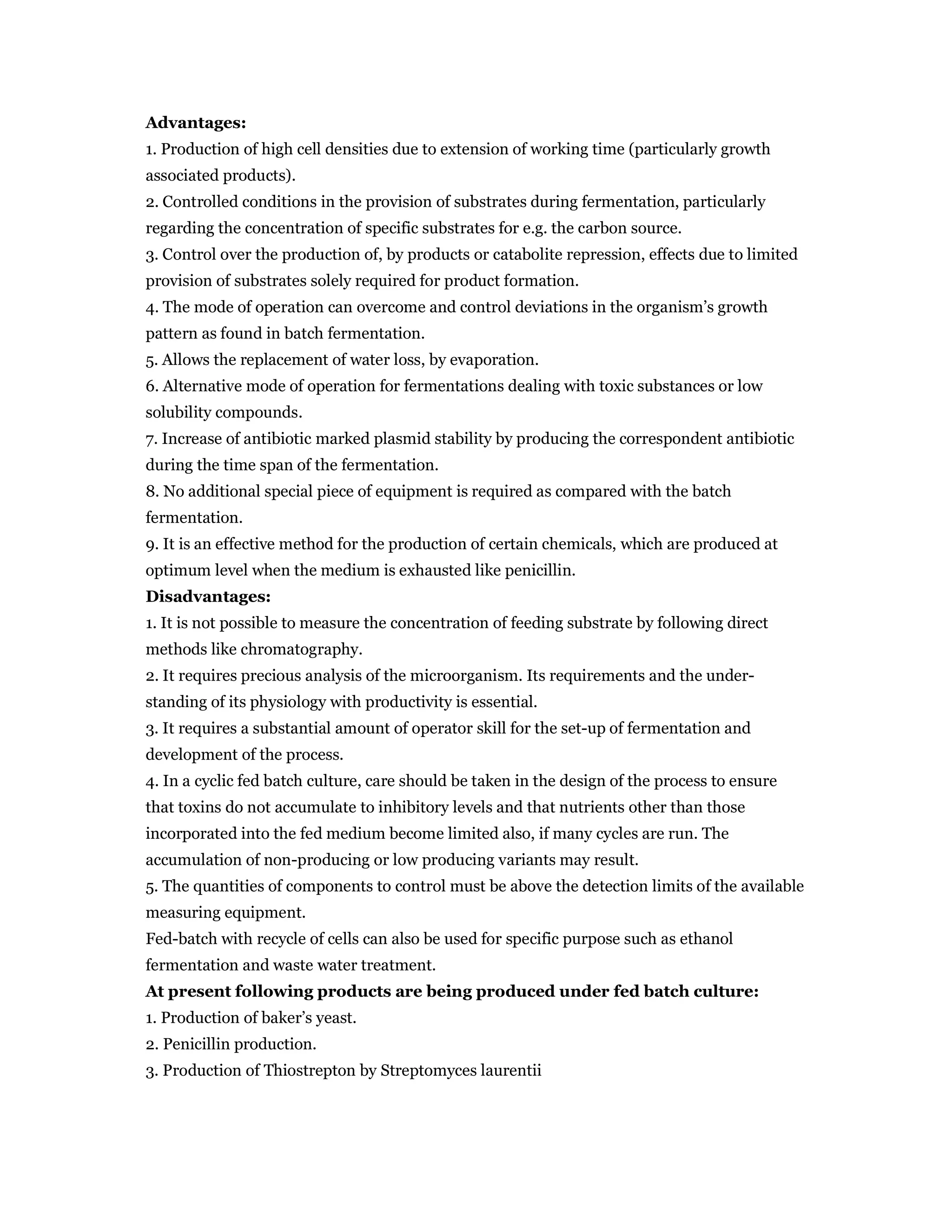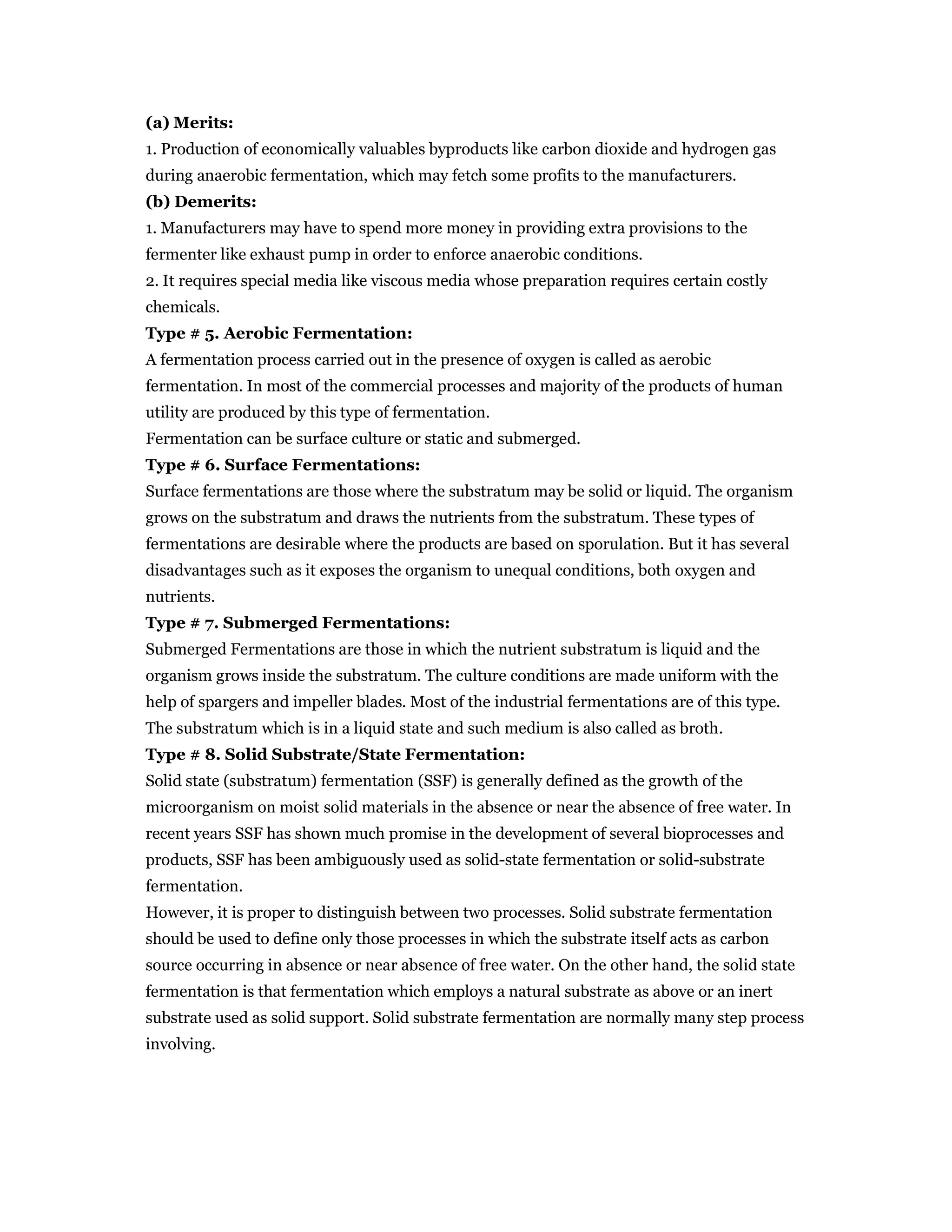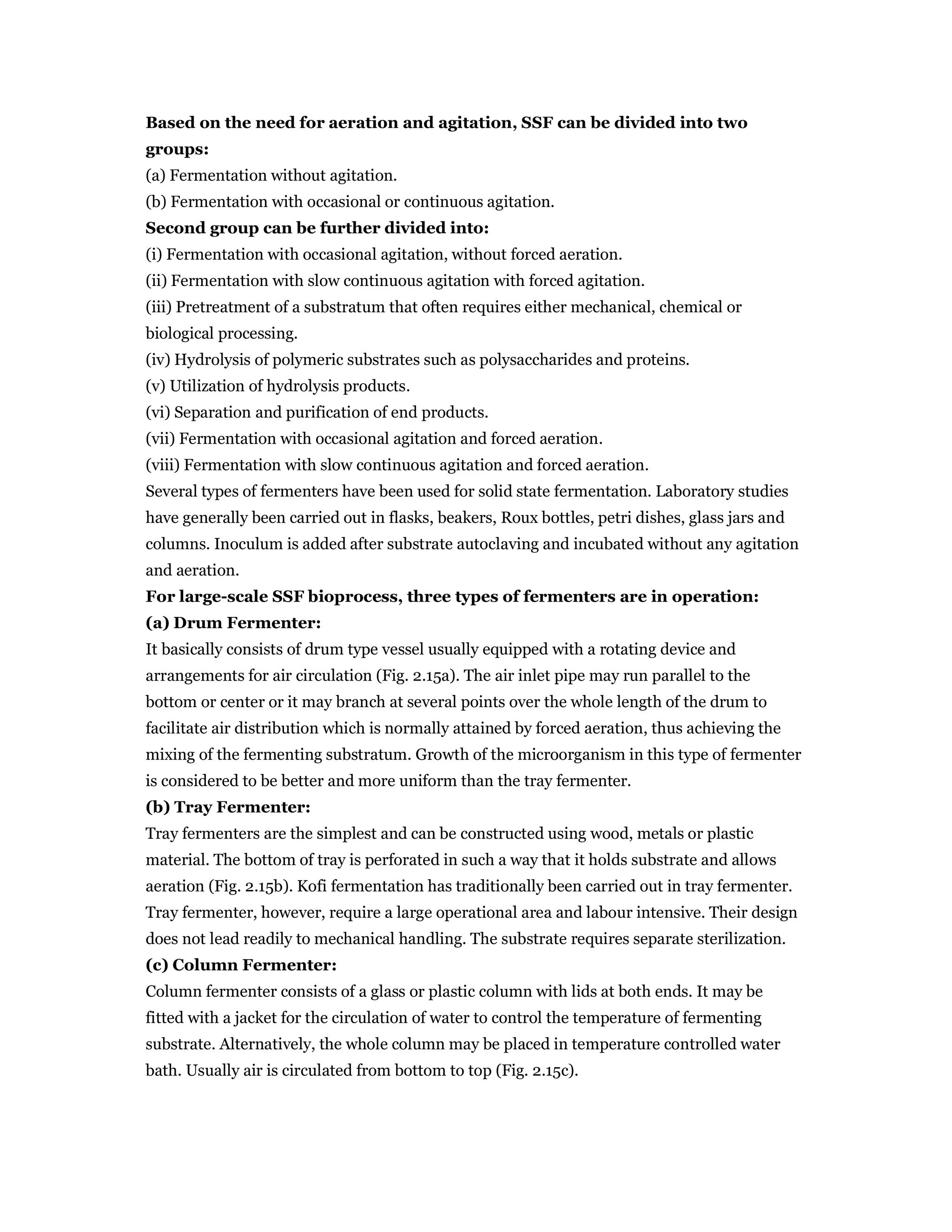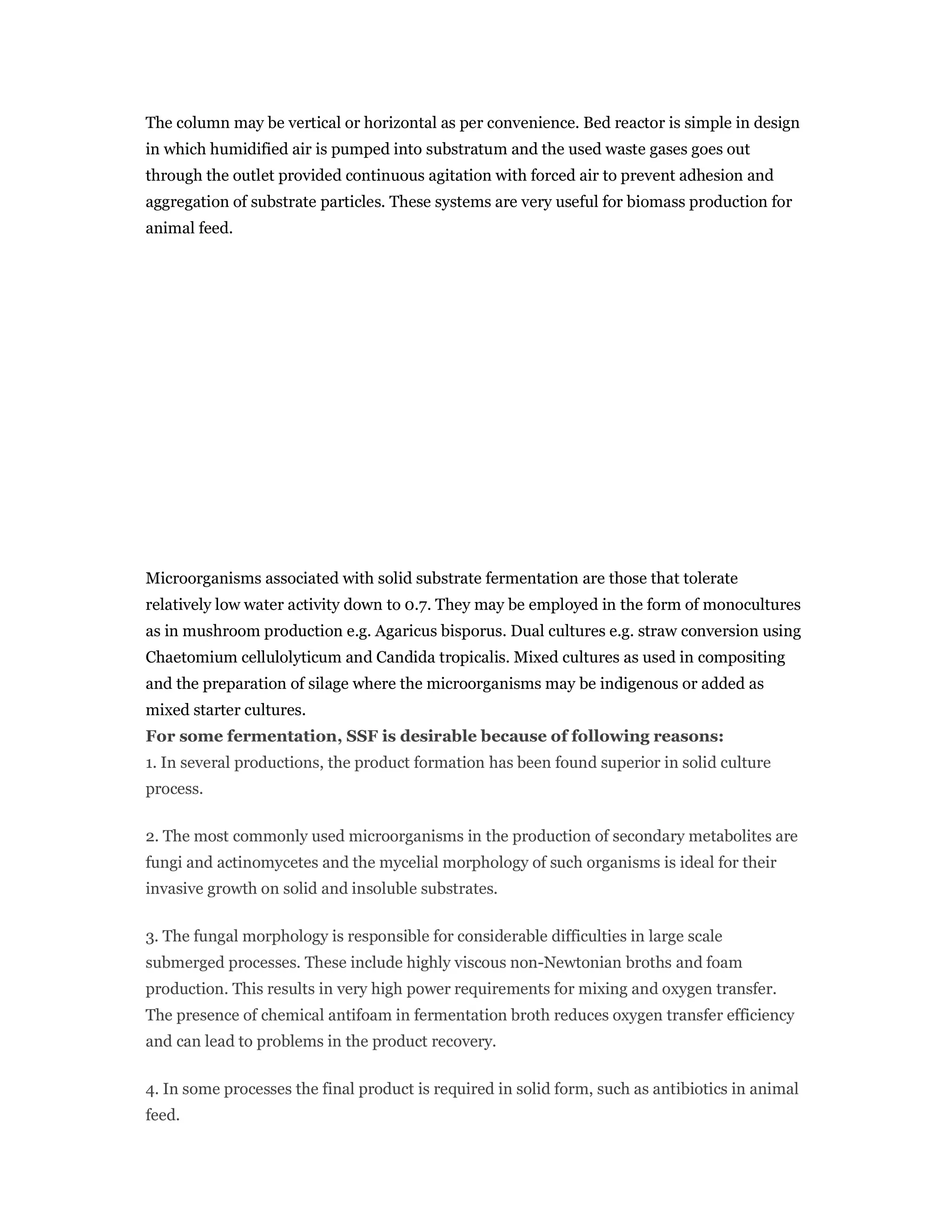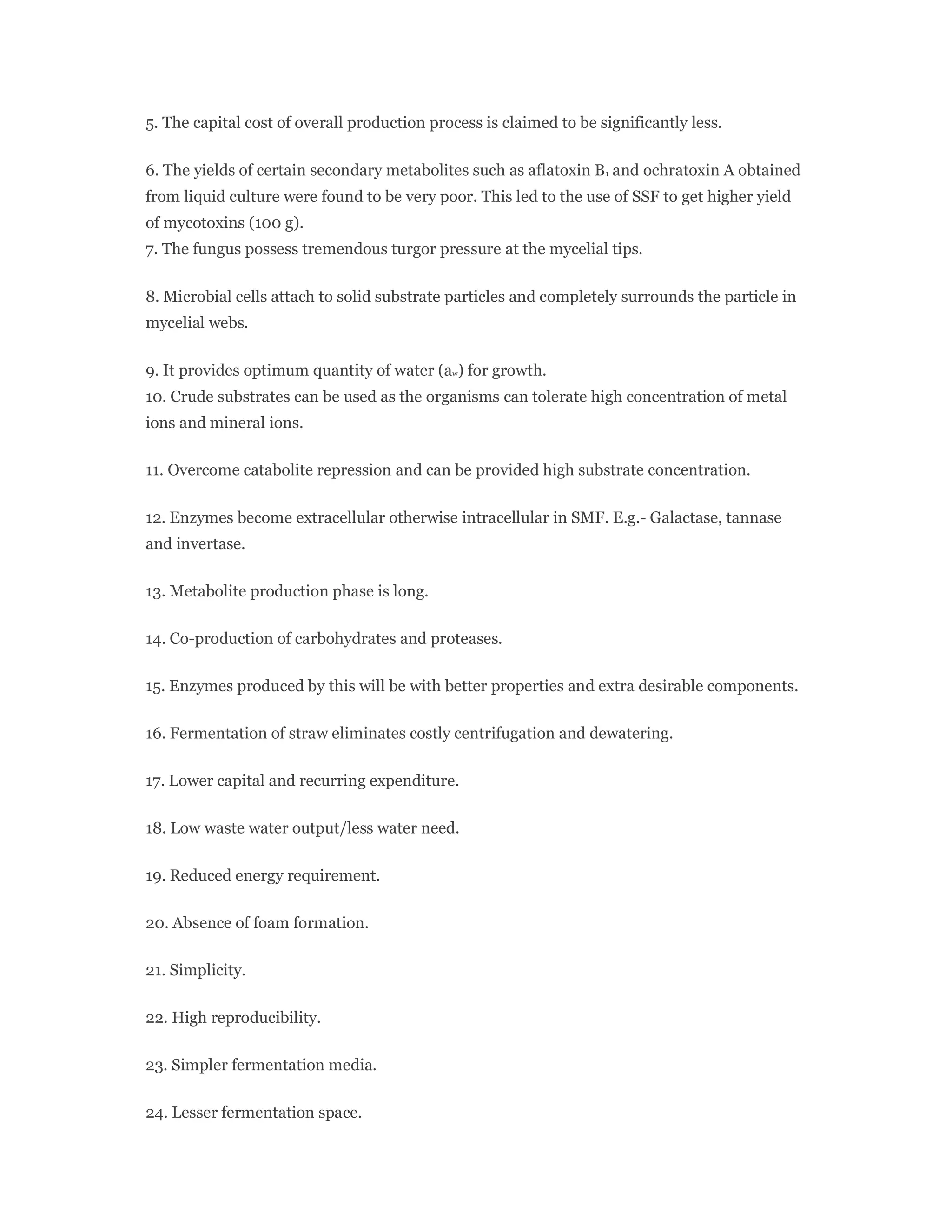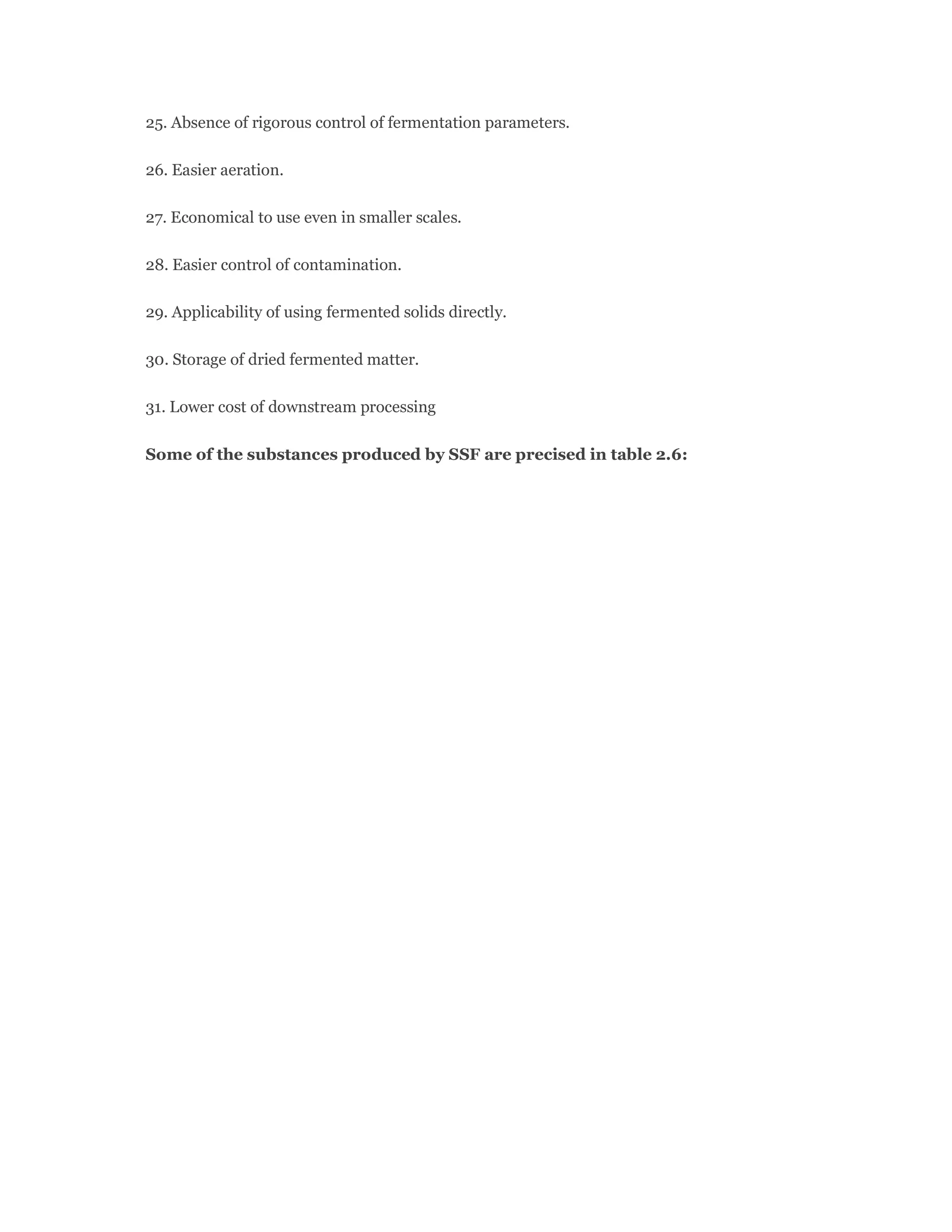There are 8 main types of fermentations: batch, continuous, fed-batch, anaerobic, aerobic, surface, submerged, and solid substrate/state fermentations. Batch fermentation involves introducing a limited amount of sterilized nutrient medium into a fermenter which is inoculated and incubated for a period of time. Continuous fermentation involves continuously adding fresh nutrient medium and removing used medium to maintain constant volume and nutrient levels. Fed-batch fermentation periodically adds substrates to maintain optimal concentrations.
